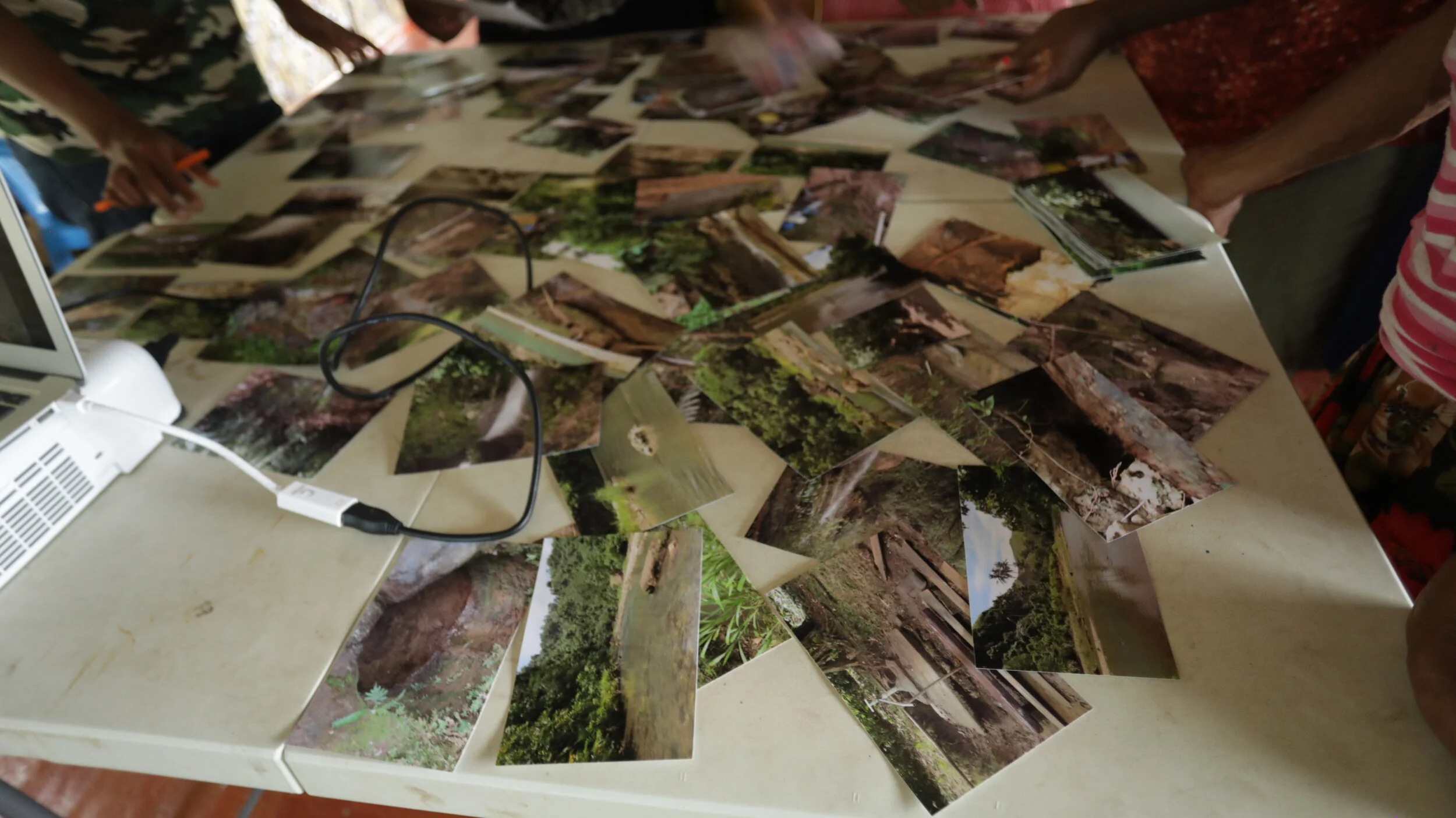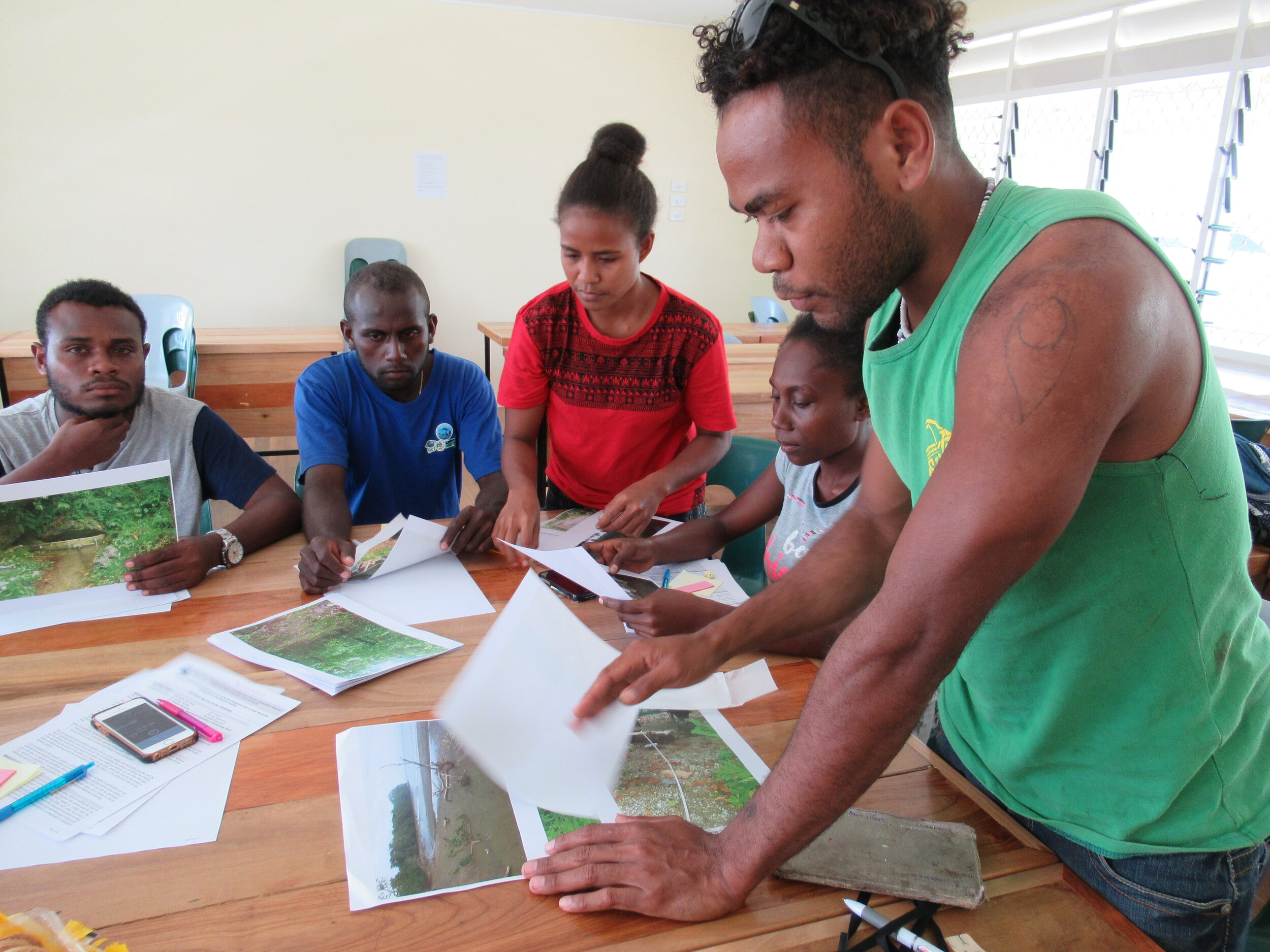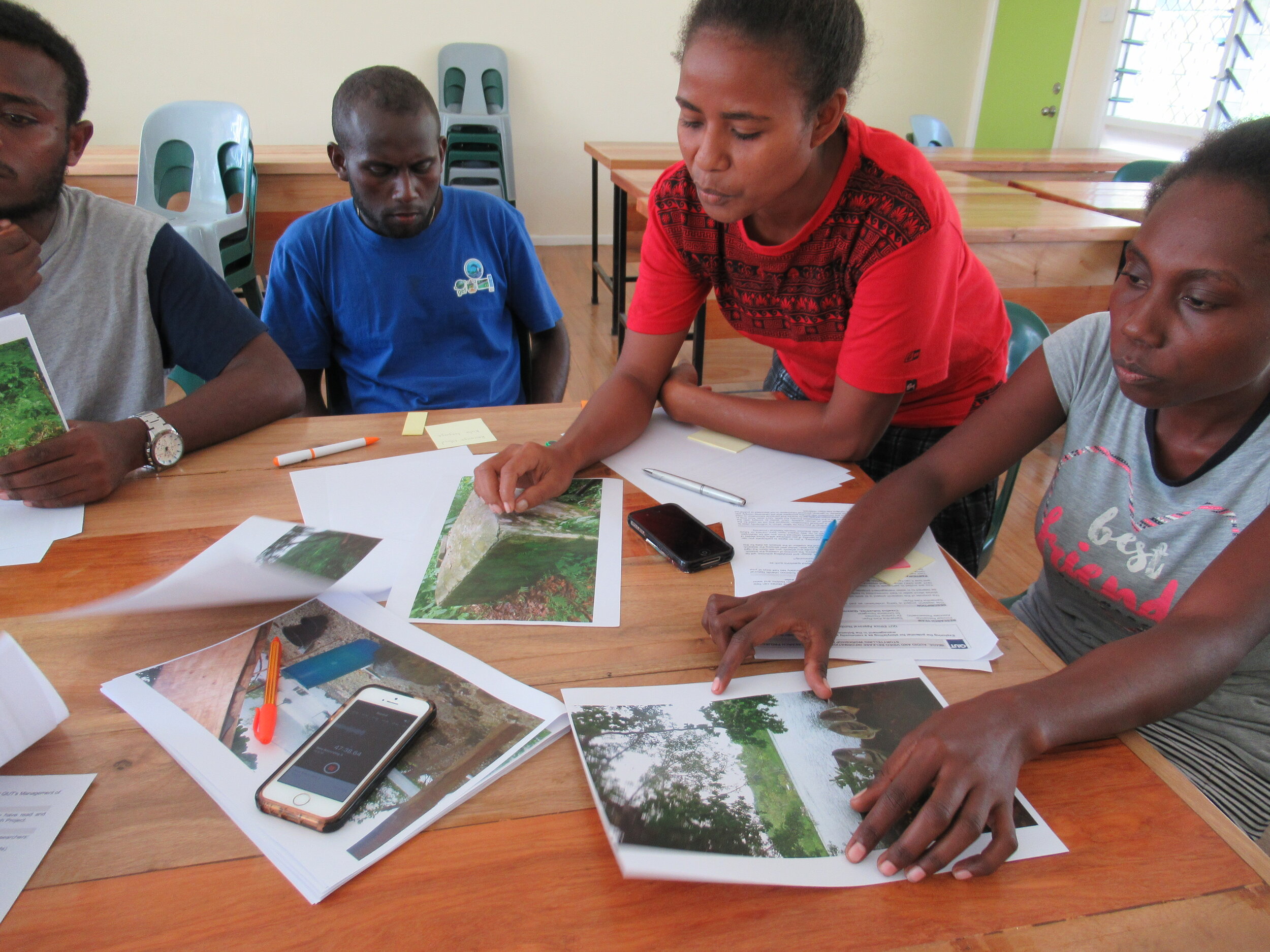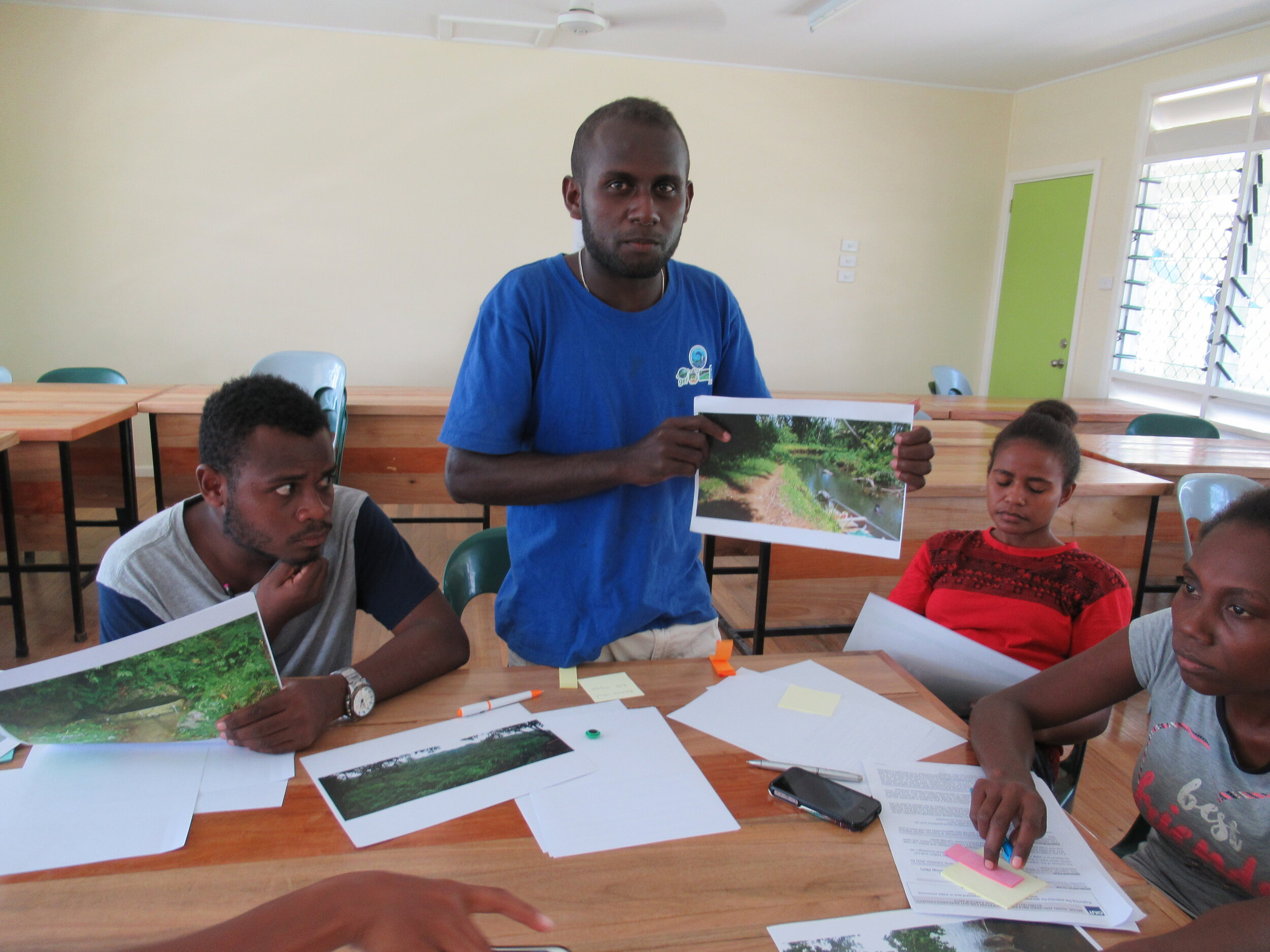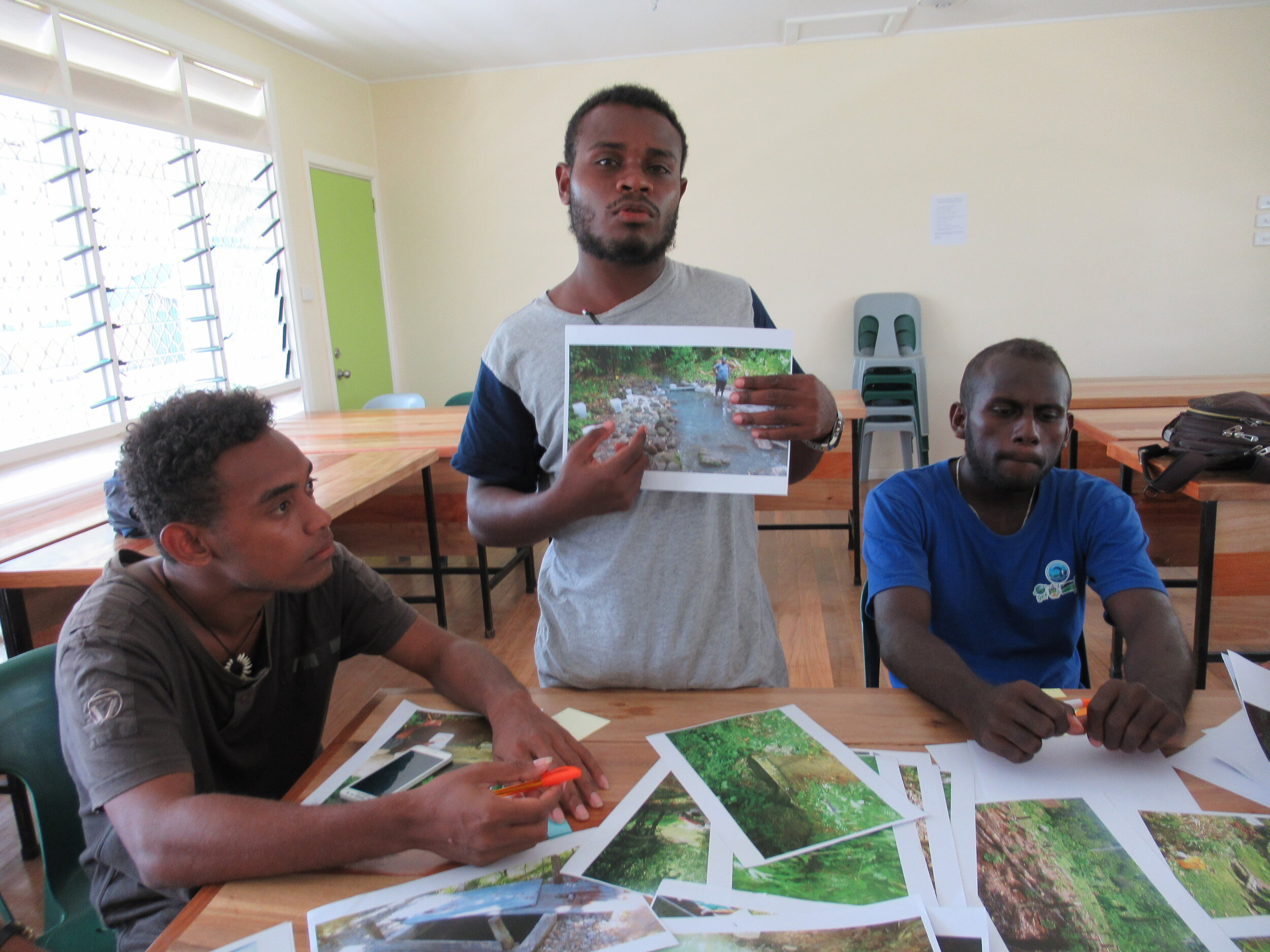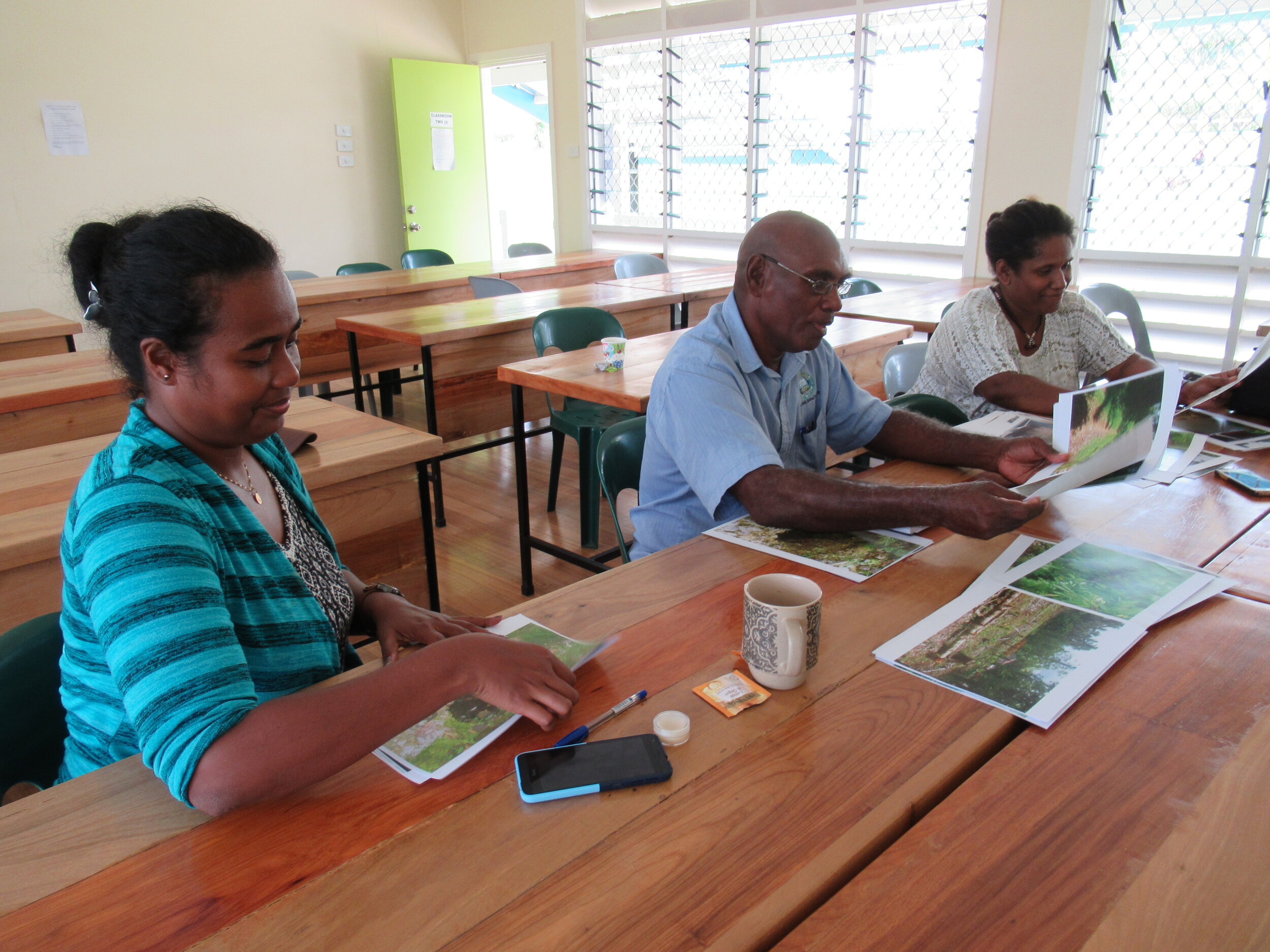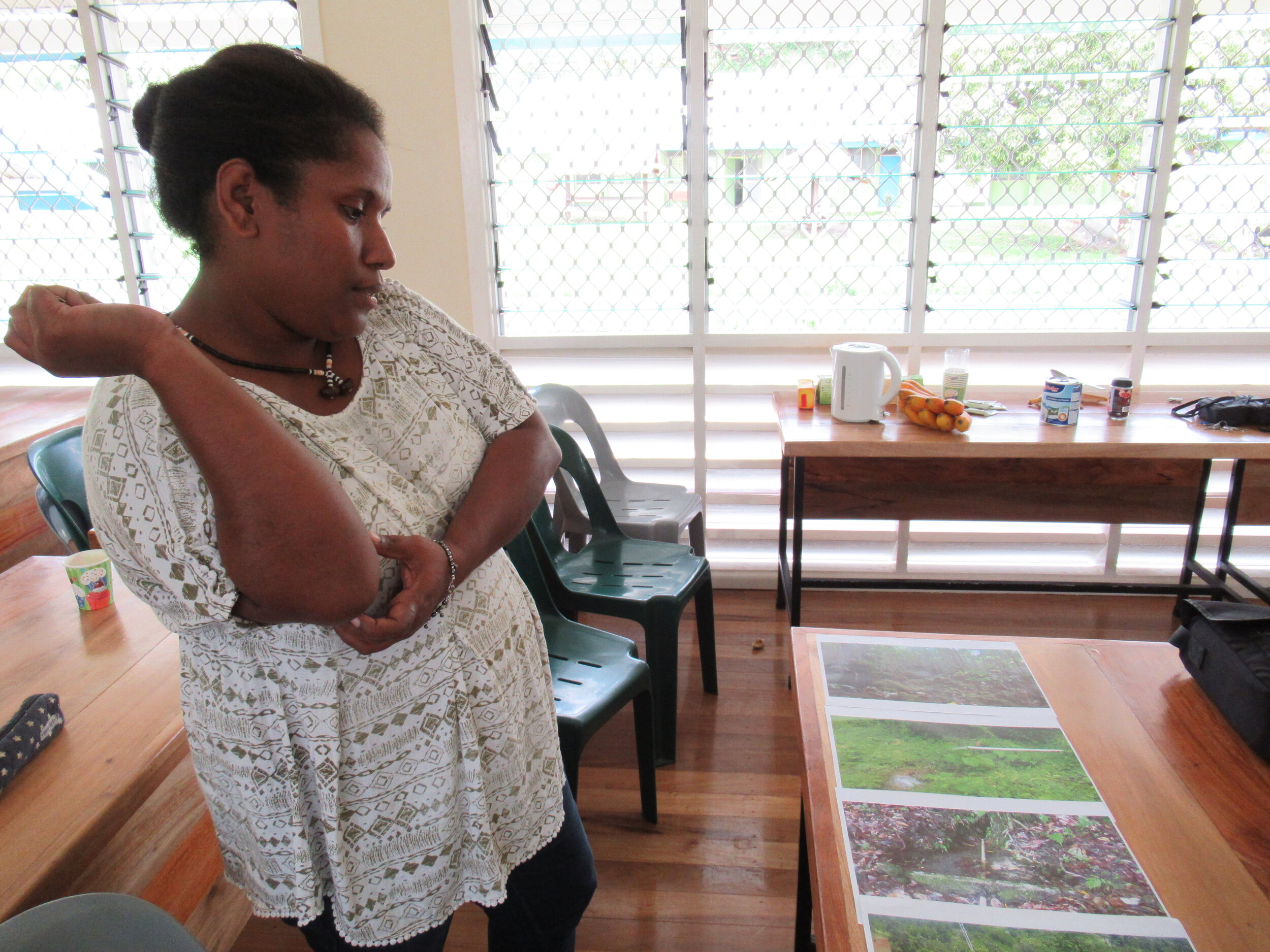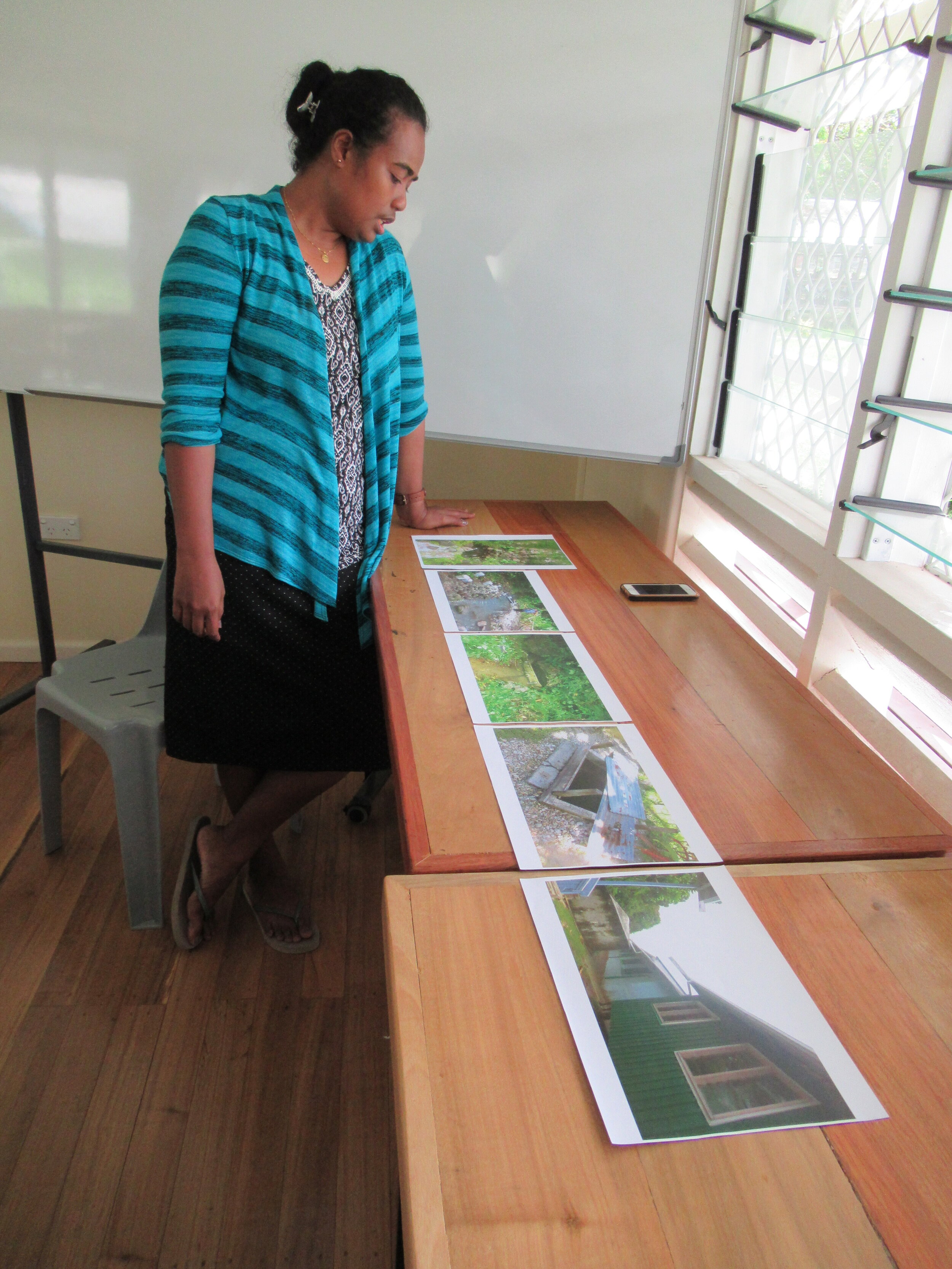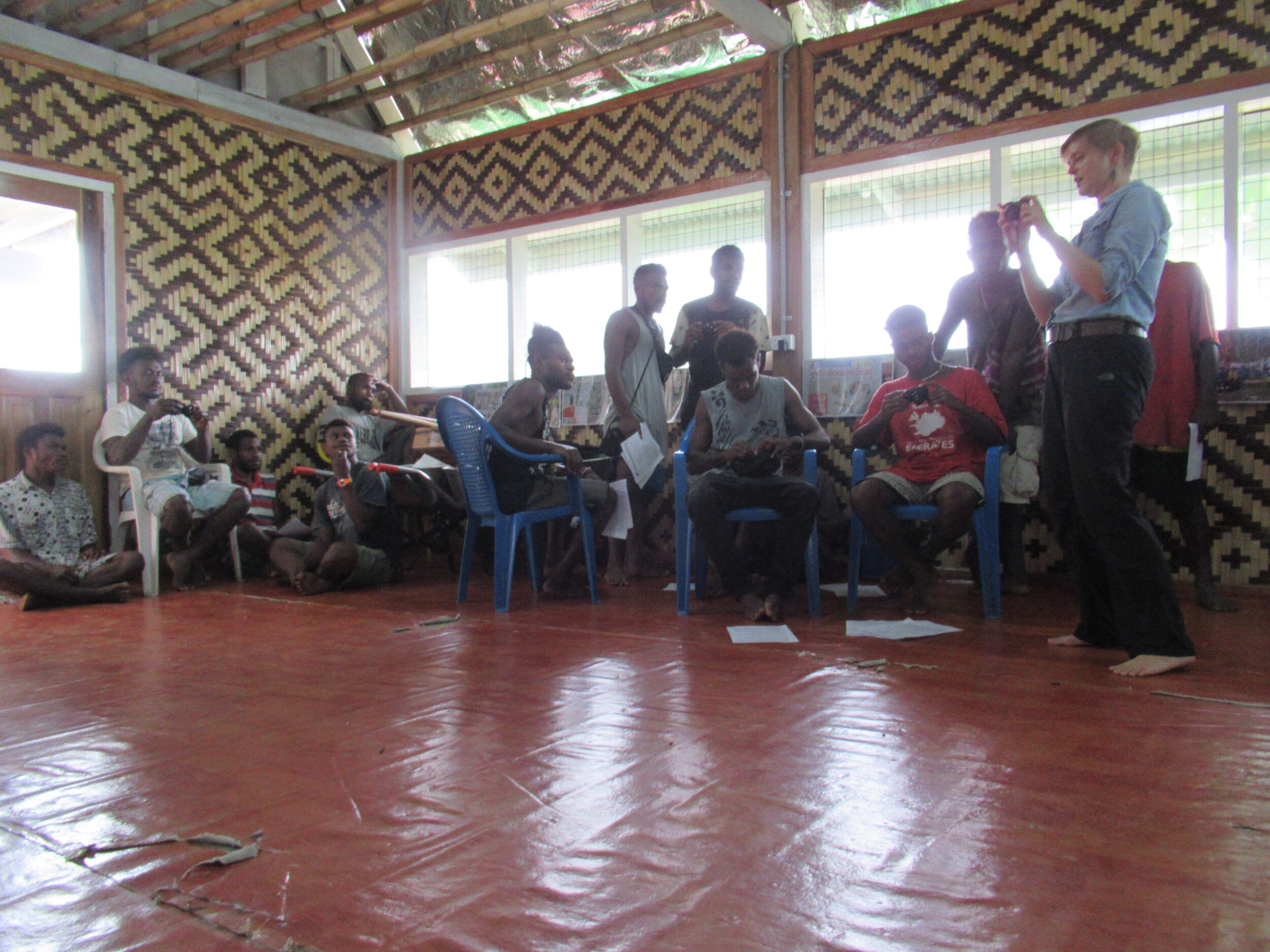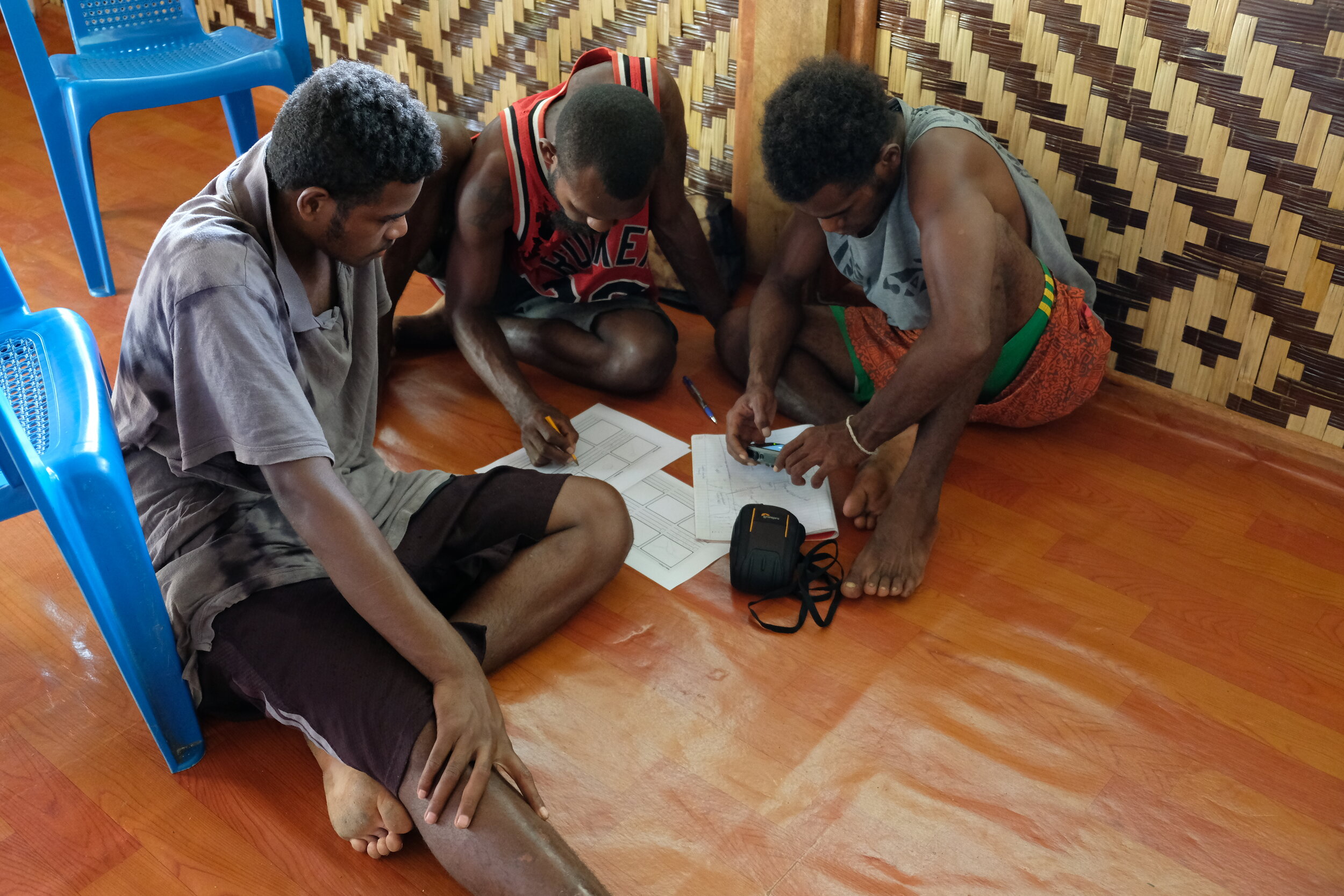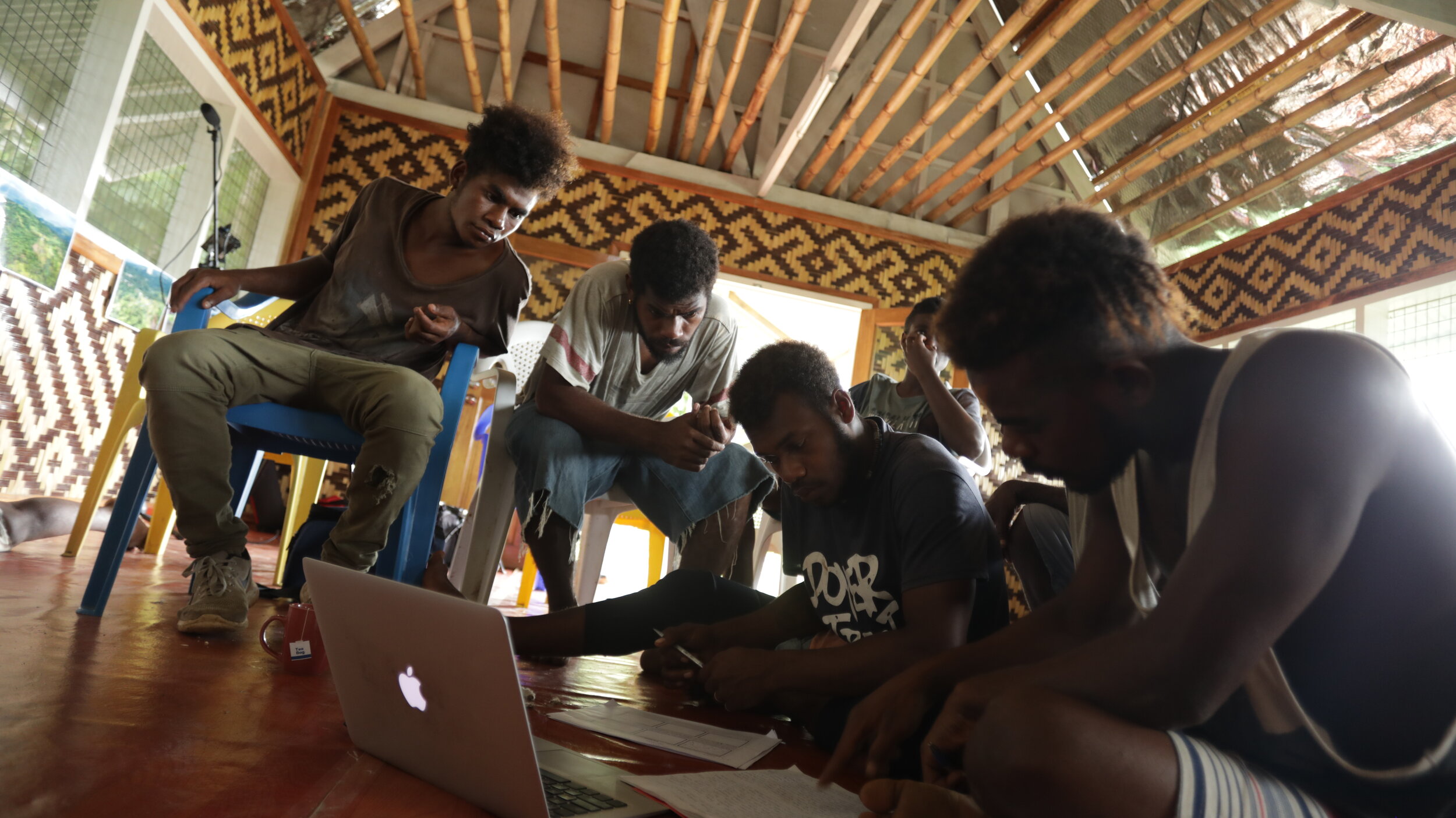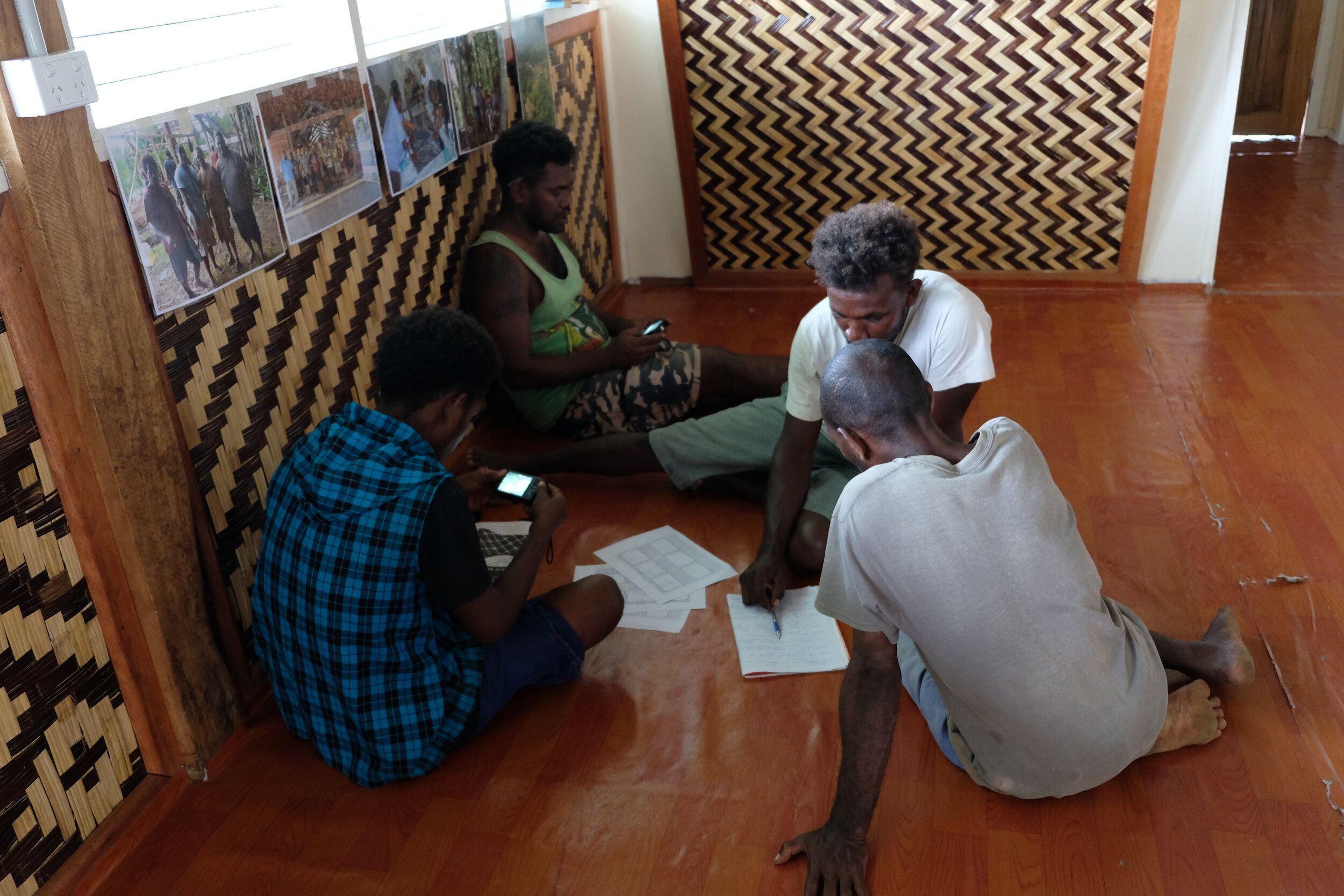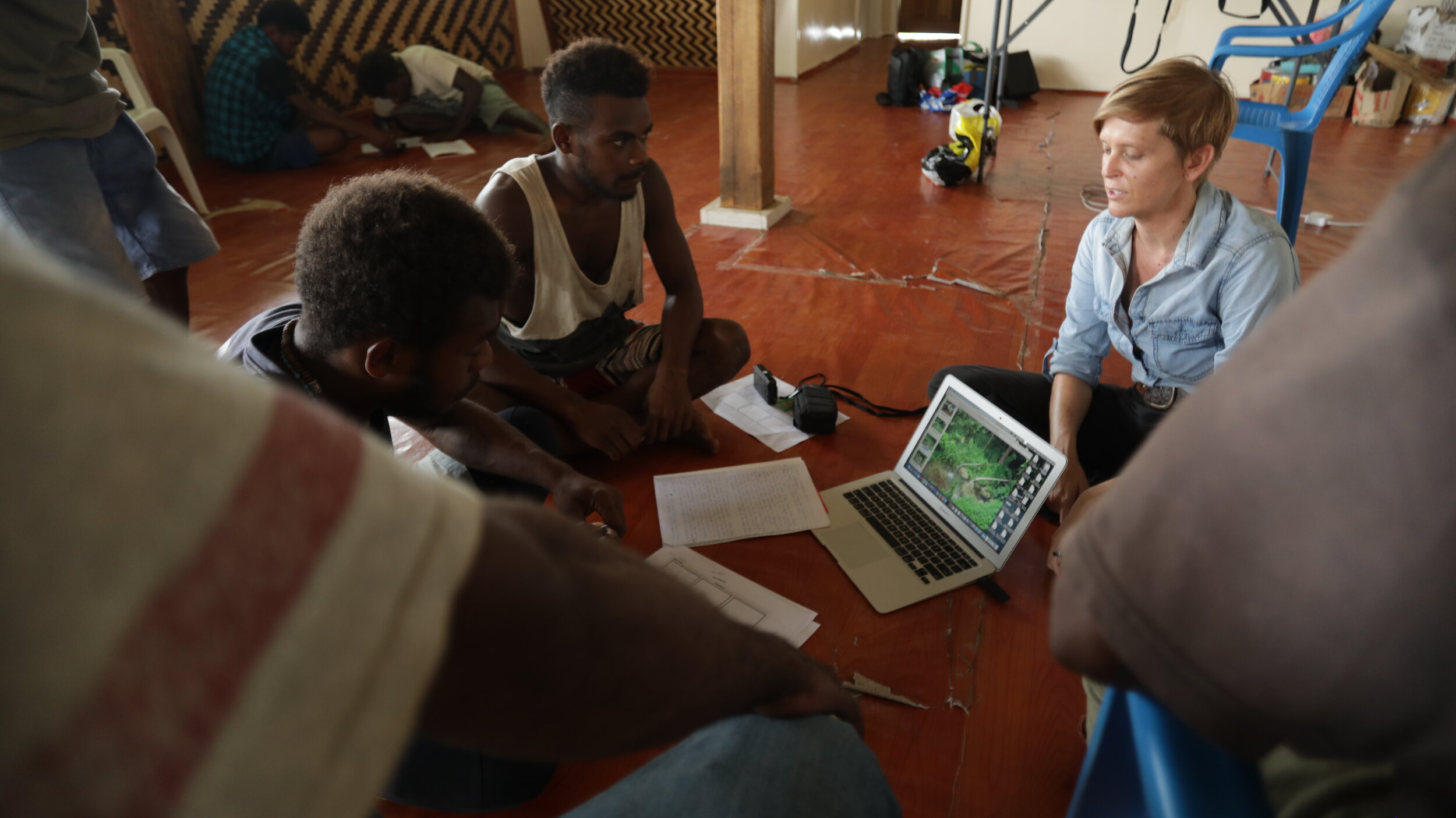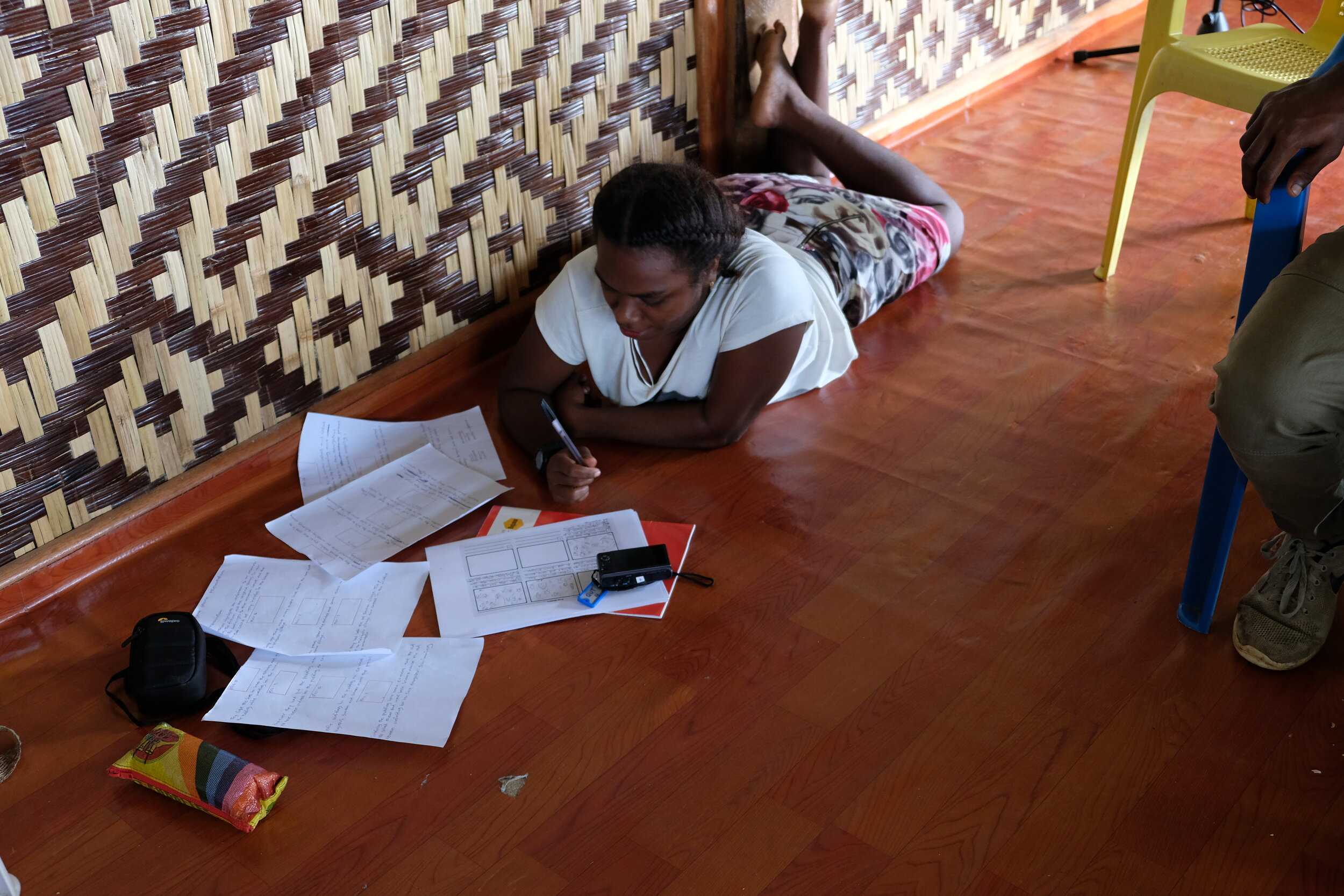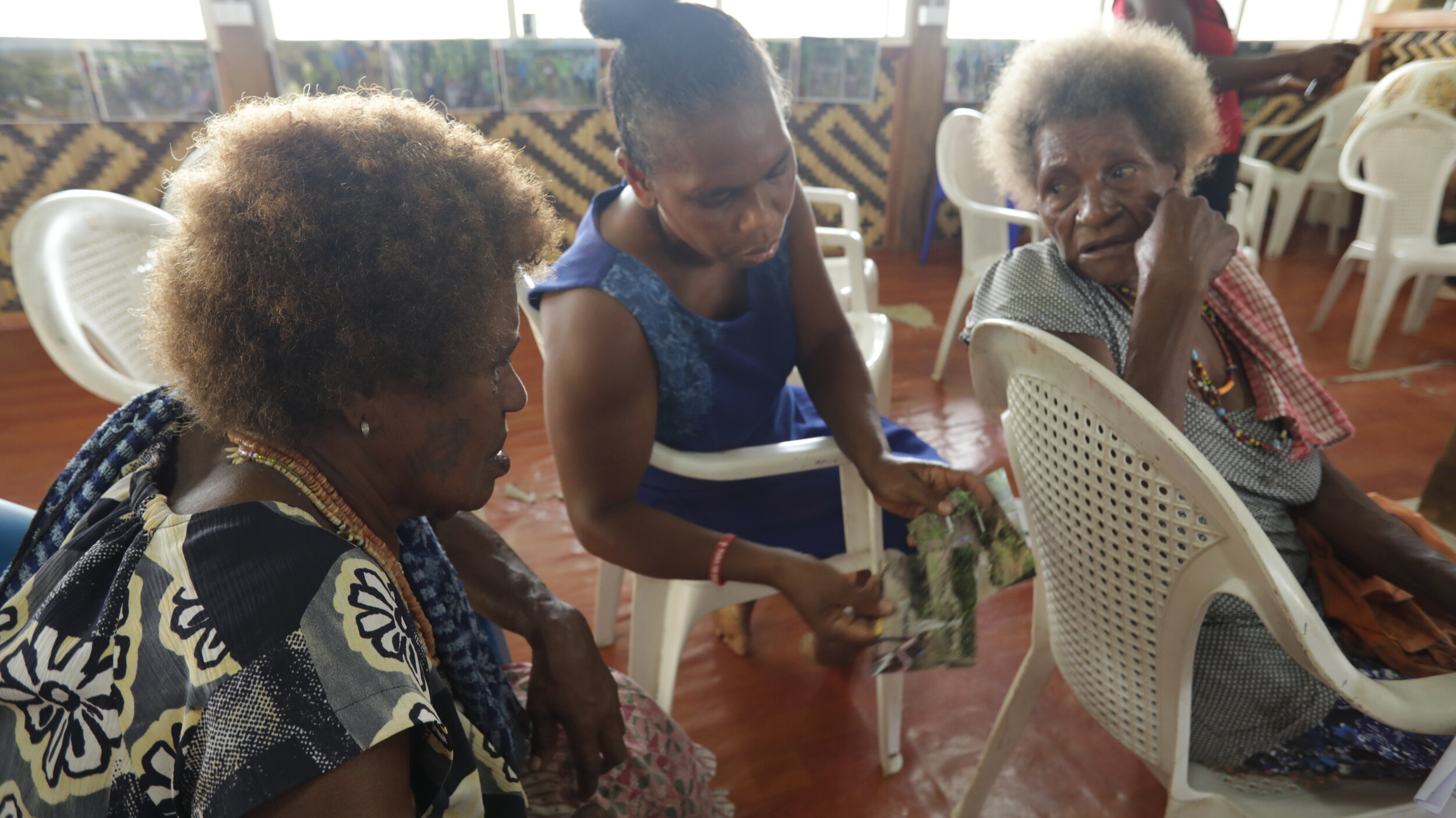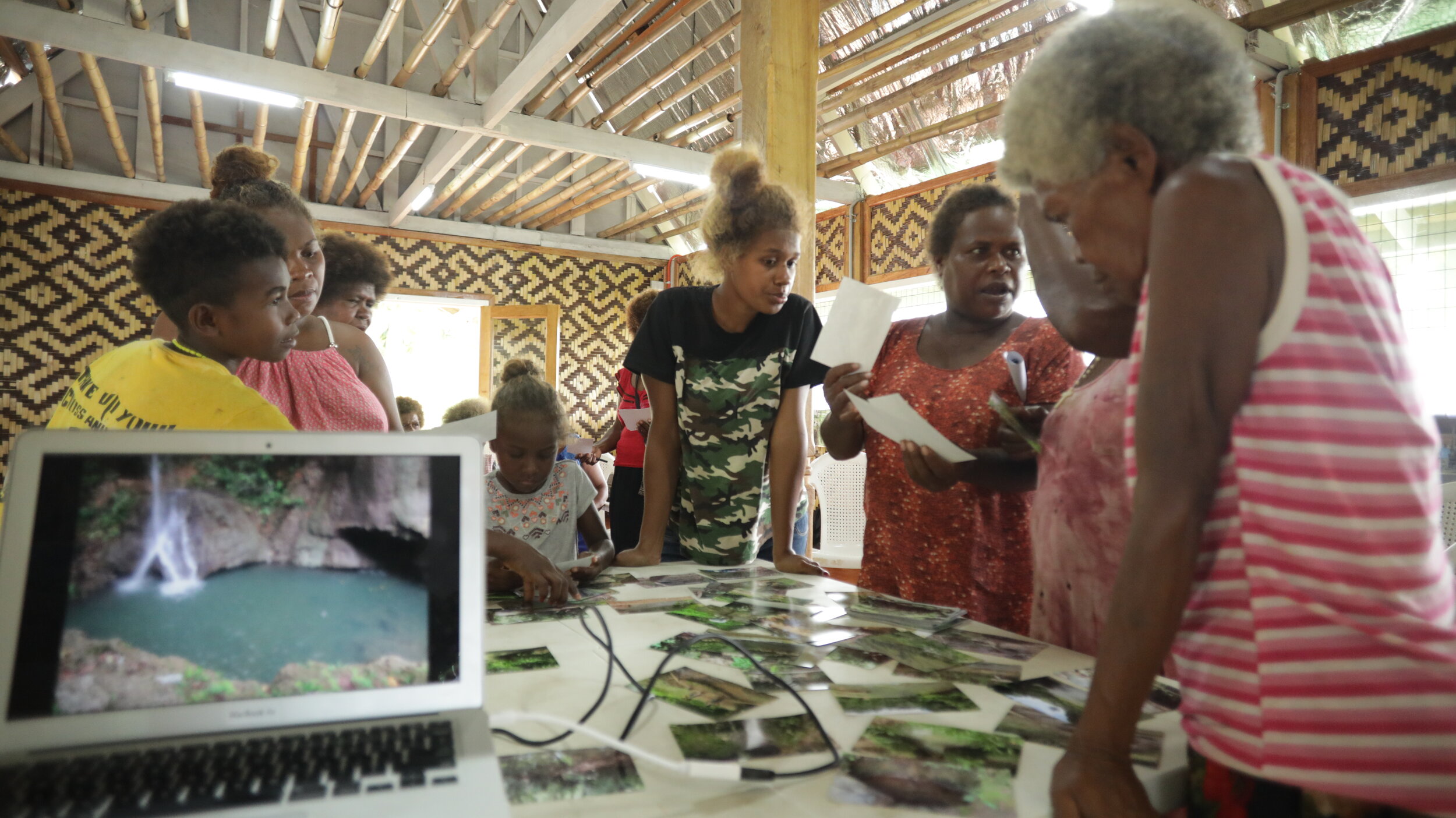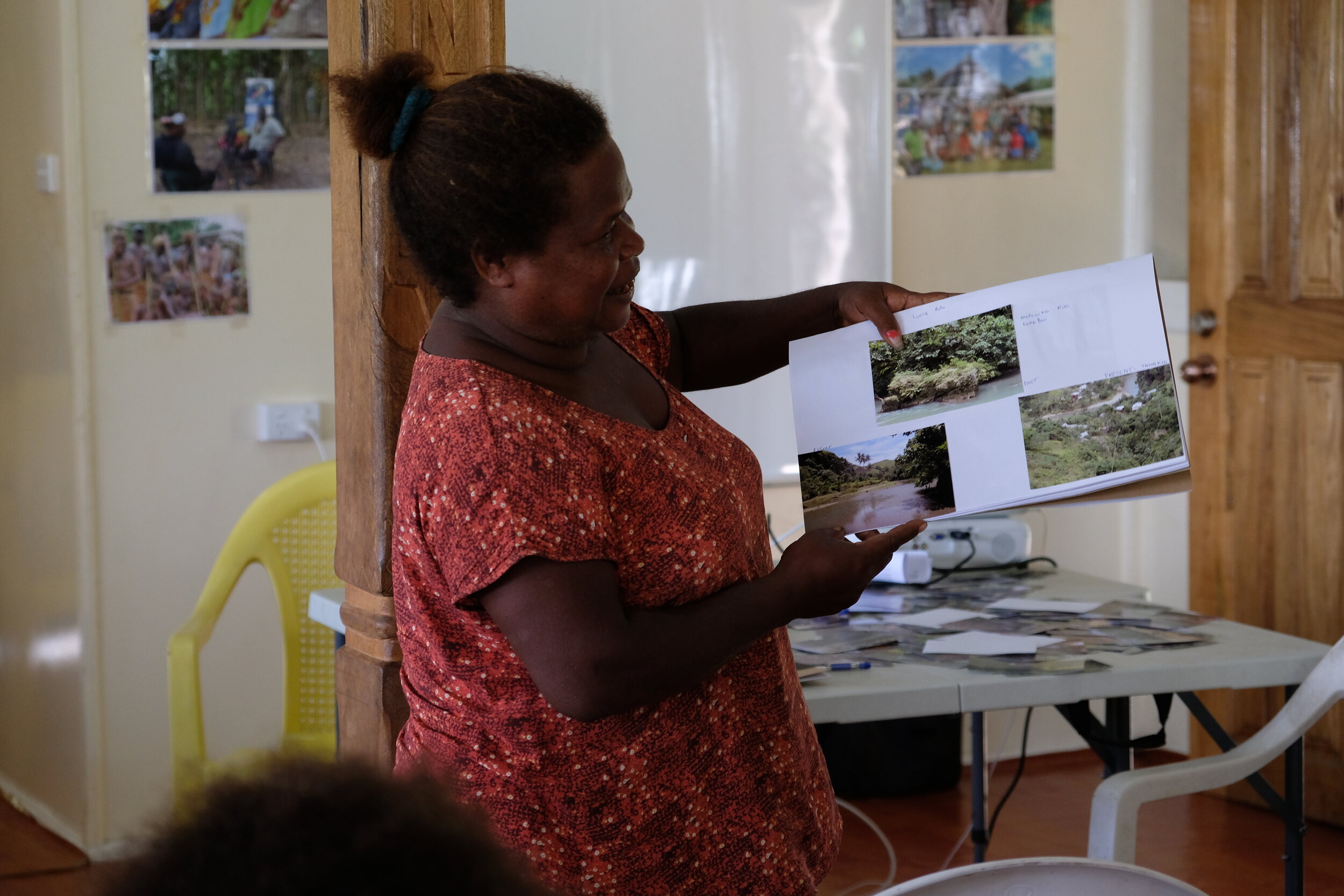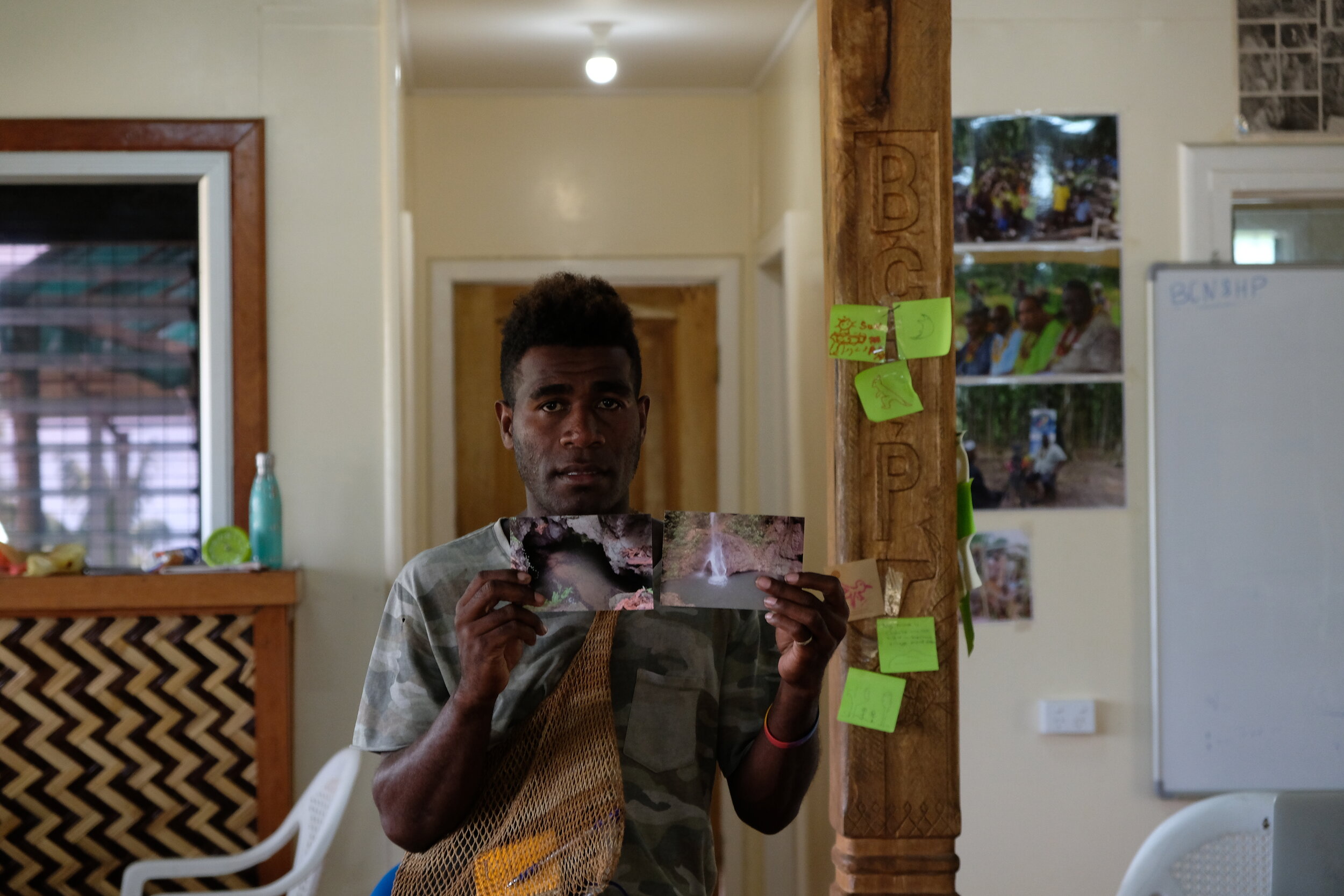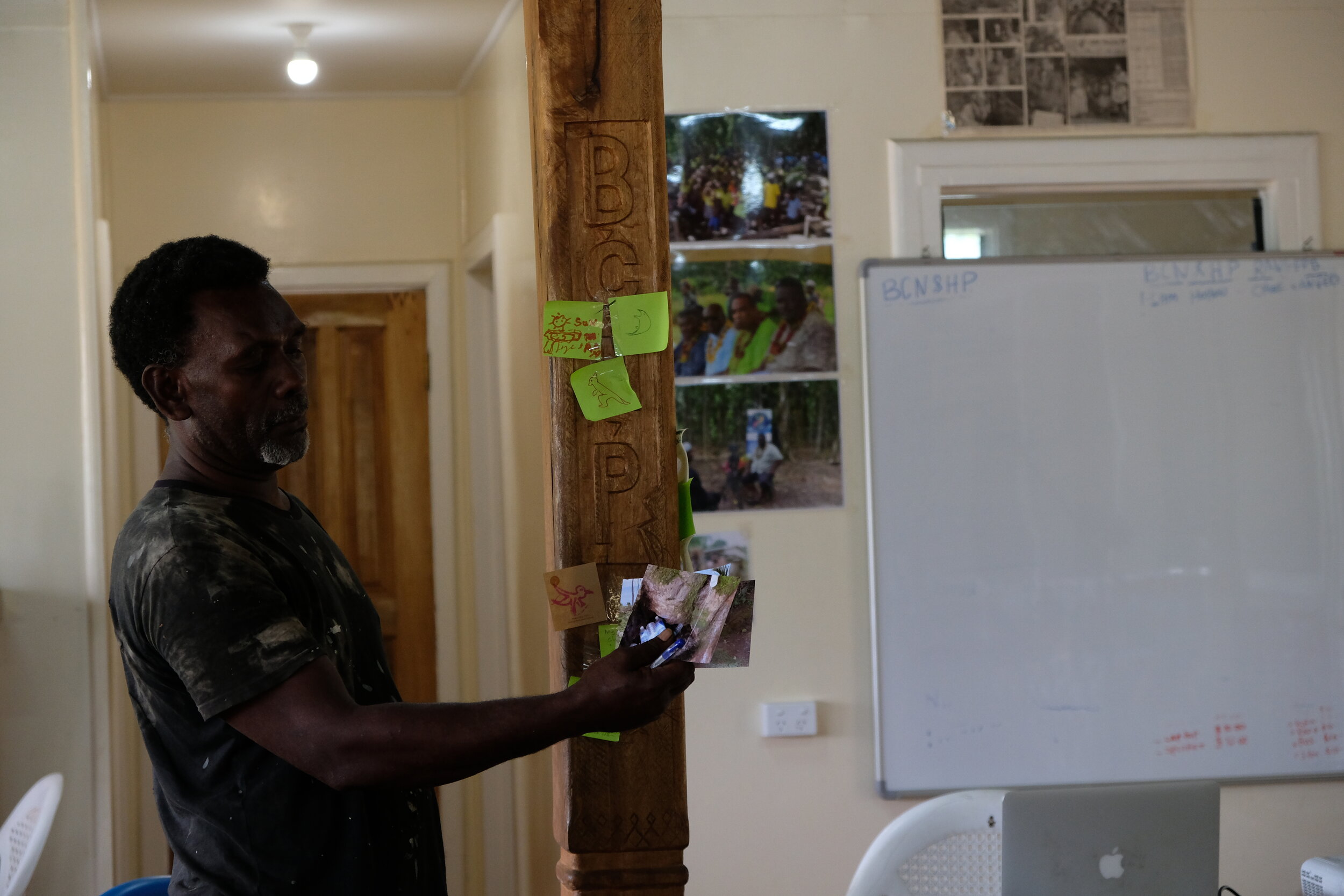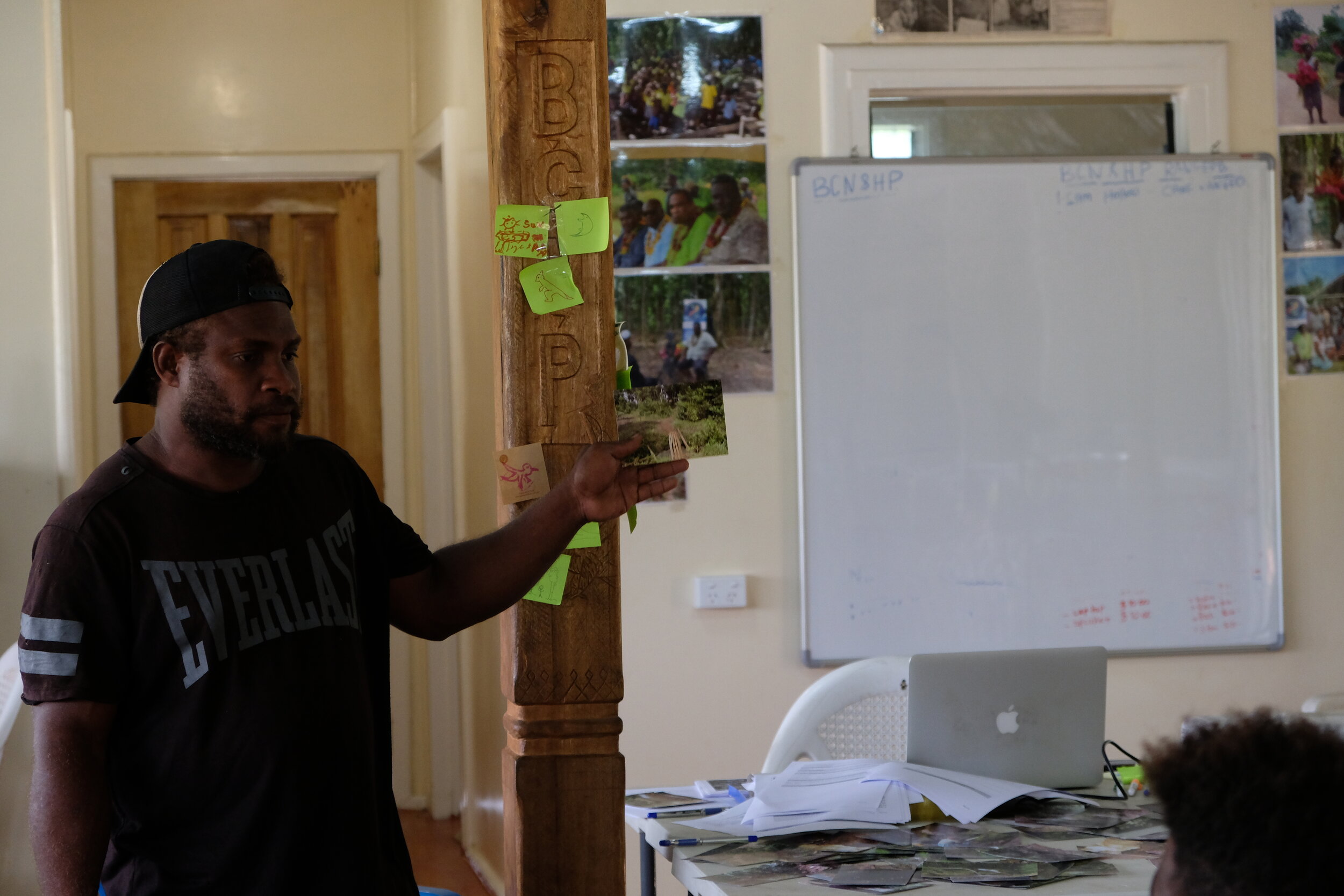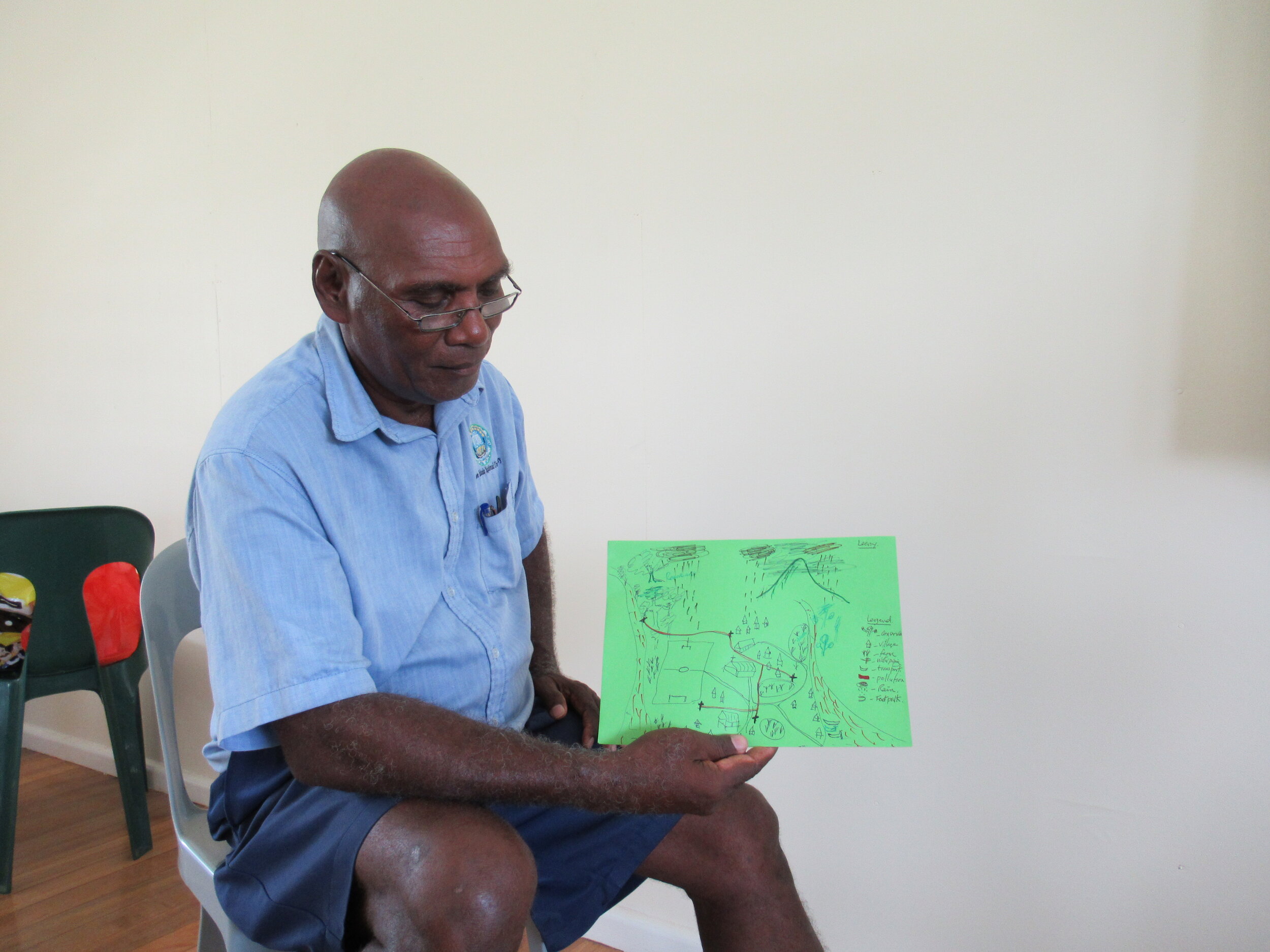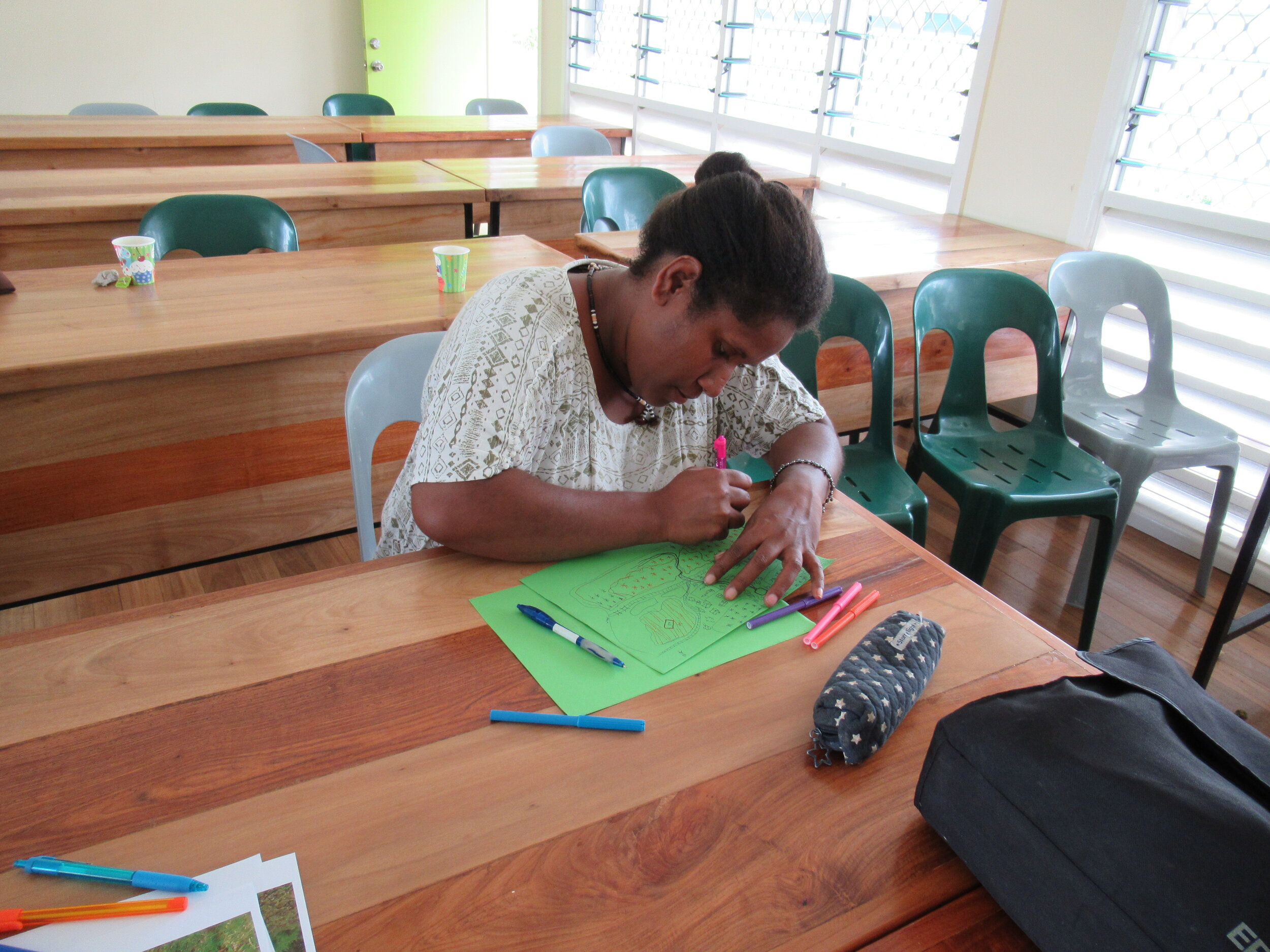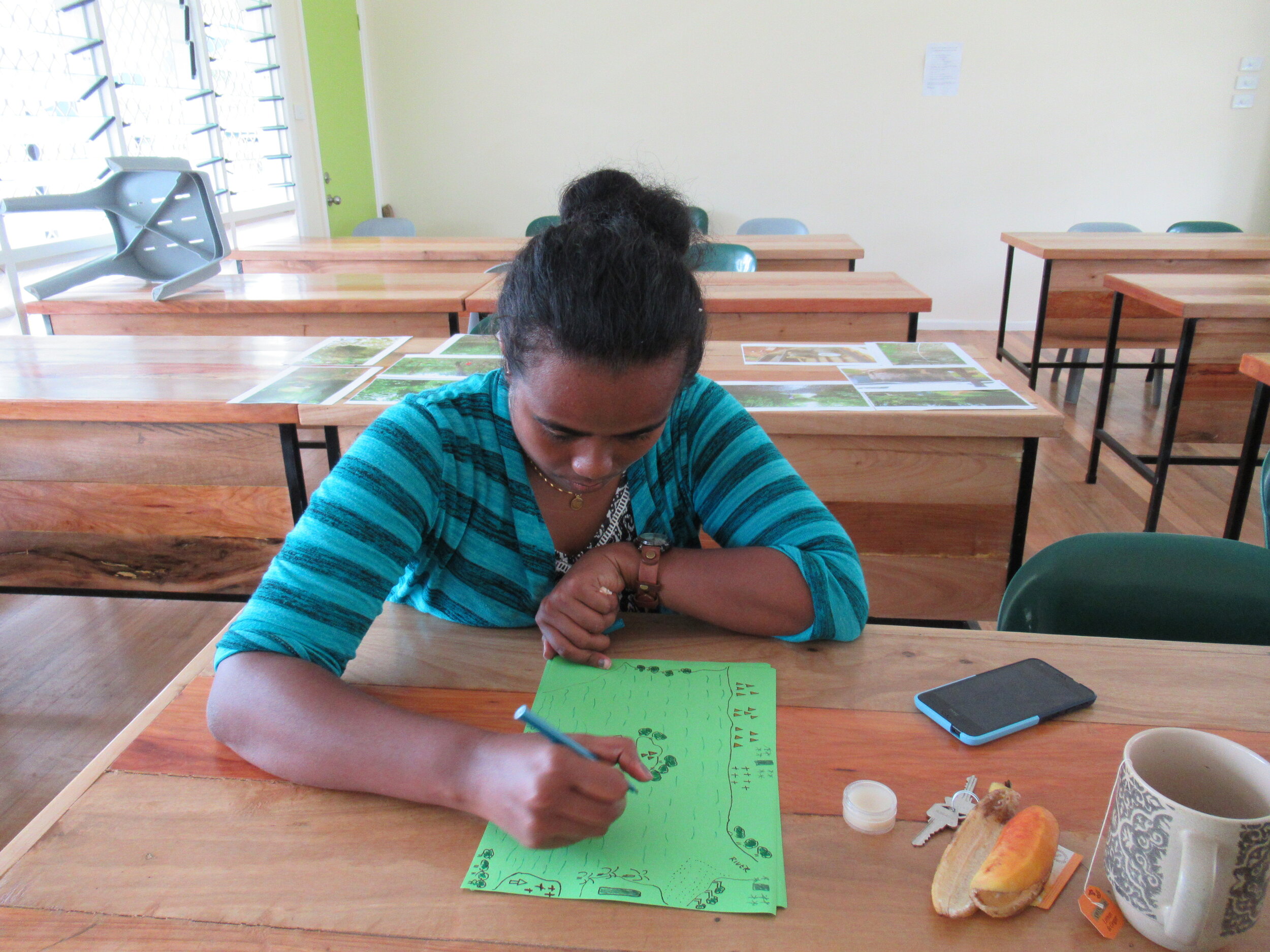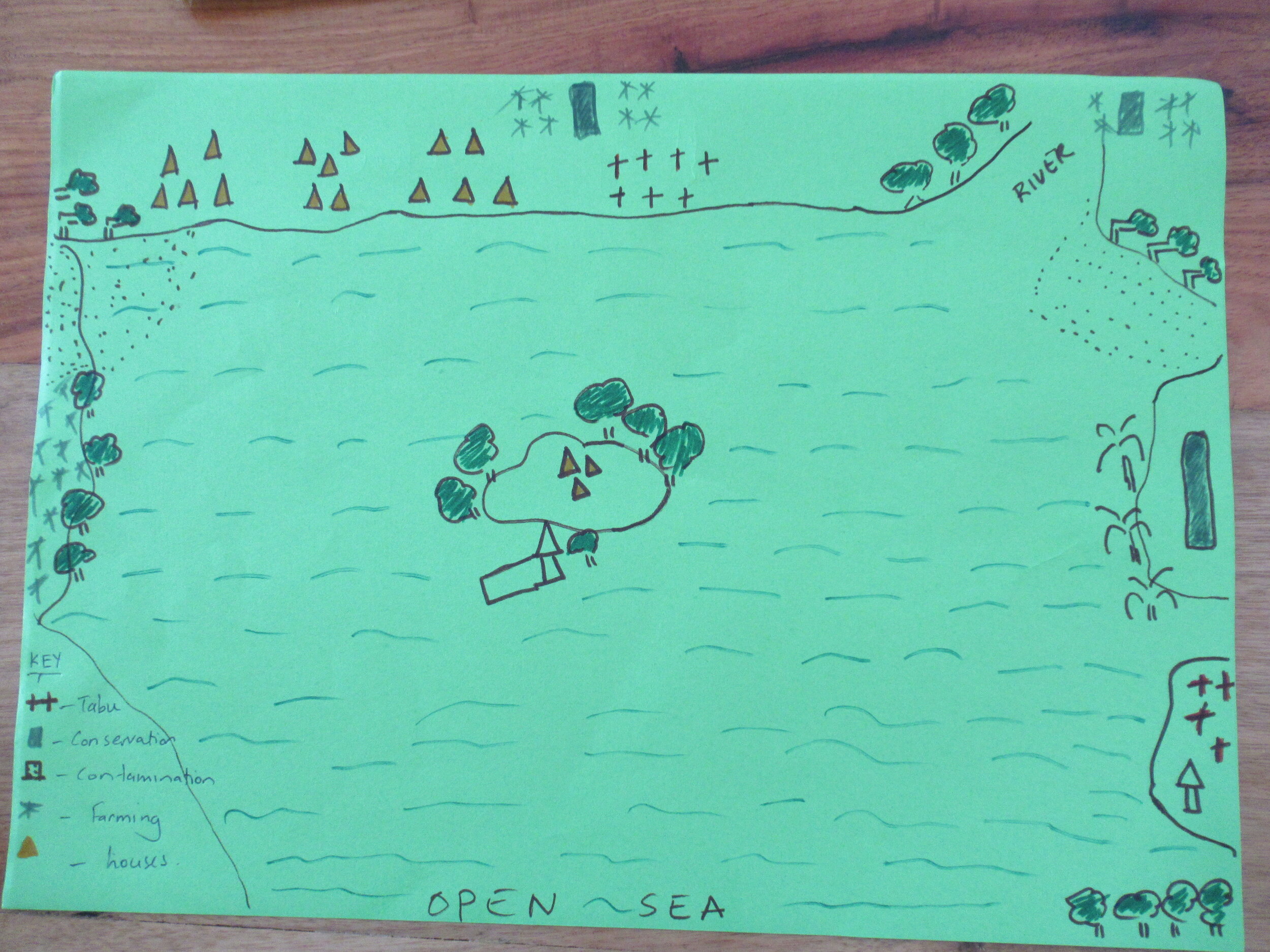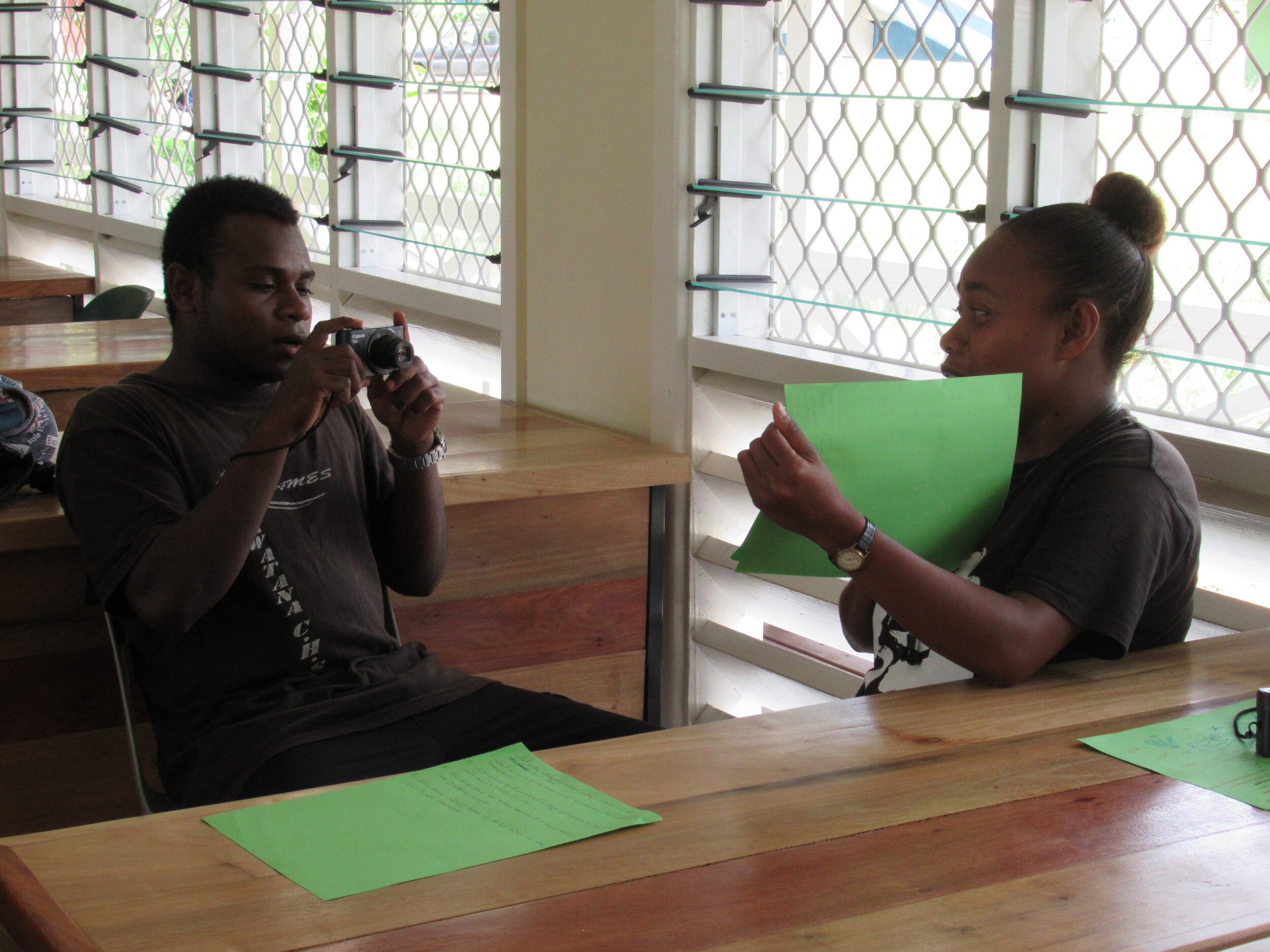Water is life: Using visual creative methods to facilitate community engagement in community-based water management in the Solomon Islands
This website showcases the creative works that are the final outcome of a participatory action research project undertaken by Samantha Kies-Ryan in her Doctor of Creative Industries (professional Doctorate) through the Queensland University of Technology. The research explores and develops innovative and creative approaches to community cultural engagement in community-based water management and climate change adaptation in the Solomon Islands. This research has been undertaken in partnership with the Secretariat of the Pacific Regional Environment Program (SPREP), Solomon Islands National University (SINU) and the Barana Community Nature and Heritage Park (BCNHP) and is now publicly available.
The creative works showcased here have been shaped by three action research cycles combining insights from practitioners, researchers, teachers, students and communities engaged in water management.
In the research we used and adapted visual research methods such as participatory photography, photo story and cultural mapping to facilitate intergenerational dialogue about past, present and future and engage the broader community in community-based water management. Please view the process video below to see how we created these together.
This is Samantha Kies-Ryan's DCI process video. Restricted access.
The research consisted of three action research cycles (ARCs), which were undertaken over two fieldwork periods in 2018 and 2019. The three ARCs built onto each other in an emergent process, in iterative spirals of activity that are represented below:
The research consisted of three action research cycles that built on the learnings and findings from each other.
The three cycles of action research that were undertaken, as represented in Figure 8 engaged with practitioners, teachers, students and communities who were working in water management to understand participants’ relationship to culture, water and place.
In ARC 1 I interviewed 12 practitioners in water management and climate change adaptation on current community cultural engagement practice in order to understand tensions, challenges and opportunities in practice.
In ARC 2 I took the insights gained from water management practitioners, workshopped and further developing understanding around these issues and developing tools to begin to understand people’s lived experience and cultural realities around water and sustainable water management. This took the form of four storytelling workshops that applied visual creative methods to gain insights from teaching and learning through engaging students and staff in resource management from SINU. Through these workshops themes and ideas were explored and simple creative visual storytelling techniques were tested and developed in different ways.
In ARC I worked in partnership with the SINU and the Barana Community Nature and Heritage Park. We took the understandings gained from practice and teaching, further developing this understanding around these issues and testing processes that used visual creative methods that had been used previously developed to understand people’s lived experience and cultural realities around water and sustainable water management. We co-facilitated four storytelling workshops with community members from Barana around cultural values and knowledge and their water ways.
One of the visual creative methods that we adapted and applied was photo story. In Action Research Cycle 2 we provided photos from water management practice in the Solomon Islands and asked students to choose photos to represent the main water source in their home villages as they had looked in the past, looked now and would look in the future, and to reflect upon and discuss:
See below one of the photo stories created by the SINU research participants.
One of the photo stories created by research participants records the Marovo Lagoon village community’s journey from relying on a clean, natural water sources such as rivers to gradually having to rely on dug groundwater wells and rainwater tanks..
This photo story process was adapted in Action Research Cycle 3 by having the youth take photos of the water sources themselves and create their own photo stories. See photos of the photography and photo story process below.
Group 2’s photo story. Click on the image to view the full PDF.
As well as the photographs, the youth also created detailed field reports that hadn’t been asked for. Please click on the images below to read them.
In Action Research Cycle 3 storytelling Workshops 2 and 3, the photographs and photo stories were taken to the elder women and men to be discussed and remixed, see below.
Below you can view one of the photo stories created by one of the older women in the women’s workshop.
One of the older women’s photo story, reflecting on the Vatumanu stream as it was in the past, is now and could be in the future. Click to see the full photo story.
Another visual creative method that was tested with SINU students and teachers was cultural mapping, where participants were asked to draw maps of their home village with a key for conservation, contamination, tabu and sacred sites and harvest. See below.
See below for one of the maps that was created.
One of the SINU student’s cultural map of their home community in Makira. You can see in the key that they have created (top right) where the sites for harvest, conservation, tabu and cultural sites and contaminated sites.
This mapping process was taken into Barana community in Action Research Cycle 3. Because the community had already undertaken participatory conservation mapping with the Secretariat of the Pacific Regional Environment Program (SPREP), the stories that came out of the storytelling workshops were able to be overlaid onto the conservation map, adding a cultural layer of meaning around the values and stories that were associated with each priority conservation site.
This research culminated in the co-creation of a community cultural map that is installed on an interactive Android touchscreen on a Hitnet kiosk at the Barana Community Nature and Heritage Park Visitors Information Centre in Barana, Guadalcanal, Solomon Islands.
Embedded in the community cultural map are seven video narratives that showcase cultural and environmental values that are being protected by the Park in six priority sites. The focus of this research is two video narratives, the Bulugari and the Betikama kastom story (both password protected) that discuss cultural values and knowledge that traditionally protect these sites.
This is a visual representation of the community cultural map that is installed at Barana Community Nature and Heritage Park
The research found that storytelling and photography in generative and dialogical phases supported an intergenerational conversation with the community about their past, present and future, as well as found the course of action that they wanted to take to preserve their cultural heritage and natural environment. The research developed a process that privileged the voices of youth and women. The insights and processes that were developed through the research led directly to the creation of the two video stories, the Bulugari and Betikama stories and the community cultural map that form the creative work.
Underpinning these action research cycles has been my own reflective practice, in which I have interrogated my own practice, which has enriched me as a practitioner, research, teacher and learner. My highest motivation and hope for the work is for it to be applicable and practical for the research participants and for others, so I offer this work as a way of giving back but also hope to add to a field of practice.
In this spirit I invite you to explore the work, as the exegesis has now been published. I encourage any feedback or dialogue that you have to offer, and hope that it inspires and sparks many fascinating dialogues and encourages you to reflect on your own work in turn. If you have thoughts that you would like to share with me about the work, please email me.
